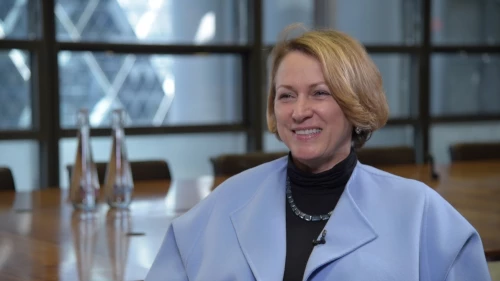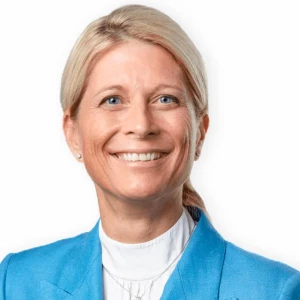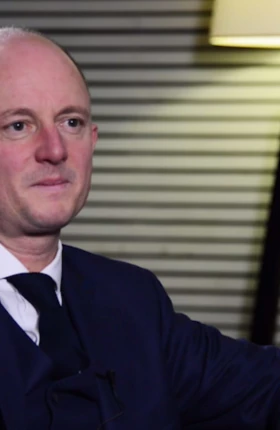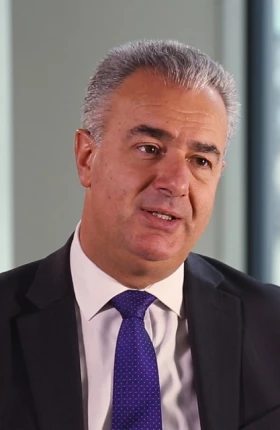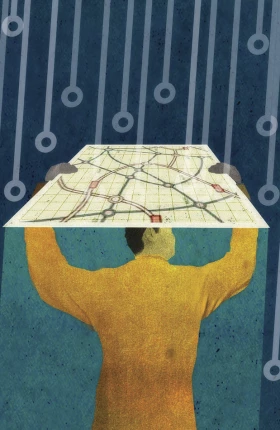When Inga Beale was named CEO of Lloyd’s of London, the world’s leading specialist insurance market, she knew it would be a challenge. Not only would she be leading a 330-year-old institution into the digital revolution, but she also had to do it in a way that would work for thousands of firms in more than 200 countries and territories worldwide.
Inga Beale
At a Glance
Born May 15, 1963
Education
Newbury College, Berkshire, England
Career Highlights
2014–present, first female CEO, Lloyd’s of London
2012–2013, group chief executive, Canopius Group, a Lloyd’s managing agent
2008–2011, global chief underwriting officer, Zurich Insurance
Outside Activities
Hiking and rugby (watching rather than playing these days)
Launched in a 17th-century coffeehouse, Lloyd’s is now a powerhouse in specialist insurance and reinsurance, insuring everything from oil rigs to celebrities’ body parts. As the first female CEO of Lloyd’s, Beale, formerly a competitive rugby player, has developed a reputation as a formidable executive, unafraid of tackling the tough challenges.
Beale recently sat down with Pia Tischhauser, a BCG senior partner and the global leader of the firm’s Insurance practice. Edited excerpts from their conversation follow.
Thank you very much for taking the time to talk to us. You are chief executive officer of Lloyd’s, which has been in the market for more than 330 years. That’s pretty amazing. You’re also the first female CEO. How does being in the market feel when there is so much change and disruption?
Well, it is interesting to take over as a CEO of a market. I’d always been running insurance businesses before, and I thought, how different is this actually going to be? And, of course, I realized it’s not: the challenges are very, very similar to those in an insurance company. Also, as the CEO, I’ve got to set a certain strategy and inspire others to follow and provide a vision and all the rest of it. So actually, it’s quite similar to running an insurance company.
In regard to the Lloyd’s market here in London, do you see digital as an opportunity or a threat?
There are various aspects to that. One is that digital is impacting a lot of our customers. But also of course, it’s going to impact our business model. We’re very much a paper-based market. We’ve been around for hundreds of years. But we are fundamentally undergoing a huge digital revolution in the Lloyd’s market.
We’re embracing technology: we’re looking at how technology can assist in the underwriting process, how it can assist in the claims process, how it can assist in transferring funds, and quite important, how we can improve service to the customer, to the policyholder.
So how do you balance the role that Lloyd’s plays in driving that digital change to the individual organizations that operate at Lloyd’s?
We’re a collection of many businesses. We’ve got 84 syndicates operating within the Lloyd’s market at the moment. Sometimes, these syndicates are competing. Sometimes they’re collaborating. It’s quite a complex ecosystem.
And in the center of the corporation of Lloyd’s that I run, we’re all about trying to lead the market to a certain destination. But because there’s a certain amount that’s common and we’re a subscription market, we have to provide certain systems that are central and used by all the players in the market. That’s an extremely challenging situation.
We’ve got to introduce technology that all 84 syndicates will adopt—plus over 200 brokers that place the business into the Lloyd’s market. Plus if we start to extend it to the policyholders and our delegated authority partners—our managing general agents, or cover holders, as we call them—how can they also use it?
So we’re talking about engaging with thousands and thousands of firms around the world, and that makes this job truly challenging. It’s not the same as just going through business divisions and implementing technology enhancements or putting in a new system.
That, indeed, sounds like a very, very challenging job. What did you change in your leadership style and in what way do you feel you can have the greatest impact in driving that digital change?
I spend most of my time talking to people and engaging with people, because whenever you want to do massive change programs, you’re affecting people’s lives. You can cause them some stress. They don’t know what the future will bring, and they all want to know what the impact will be. So a lot of my time—much more than I’d anticipated—is spent engaging with people, talking with people, consulting with them, and making sure that they are part of the future and are designing the future of our market.
Where do you see the commercial insurance industry’s biggest opportunities in digital?
I don’t think our insurance sector puts anything like enough time and money into R&D for insurance. We know from some of the research we’ve done that because of the changing business models, we’re providing insurance for less than 10% of the risks our customers face. That should mean huge opportunity. Massive opportunity.
Now because their models are moving so quickly, their exposures are changing very, very dynamically. So not only do we have digital affecting our businesses, but it’s also affecting the way we can deliver products. This is more about reacting to our customers’ changing exposures and providing pricing that reflects their exposures.
Do you see changes in the broker’s role in the value chain that’s being disrupted by digital?
We rely on brokers. We’ve got over 200 brokers around the world who bring business into the Lloyd’s market. They are our lifeline. They are our sales force. They are our distribution arm.
At the moment, we’re having this discussion, or question, on where the risk selection is going to take place. Is it going to take place with the broker and perhaps delegated authority? Or is it going to take place in the underwriter’s world, as it has traditionally. And that’s where whoever wins that digital world could end up being the long-term winner.
An agile workforce is terribly important. I know that diversity of talent is very close to your heart and you’ve been pushing that. What do you think needs to happen for Lloyd’s and the London market to change?
When we think about what the world is doing in terms of shifting from the West to the rest—in terms of economic power—and we look at where commercial insurance is going to be growing in the future, we know it’s going to be in some of those markets that Lloyd’s hasn’t traditionally been very strong in.
We’re going to need a workforce that is much more reflective of those markets: a workforce that understands the culture and the nuances of doing business in those places. When we think about diversity we’re thinking about gender diversity, obviously, and we’re very pleased to report that at Lloyd’s we’ve actually increased the number of senior women and executive teams across the market.
But we also want to consider the nationality of people, their ethnic backgrounds, and how they will relate to the customers of the future. We have a big drive on that. We also have to react to what’s happening with technology, and we’ve got to appeal to some technically savvy people.
What advice do you give a CEO who wants to start the digital journey and transformation?
What I’ve done is to make sure that I’m interacting with the next generation. I have a reverse mentor from a totally different age group who comes in, speaks a different language, and helps me maneuver my way through this new digital language. I think that’s great, but it’s tough on a CEO.
If you’re used to giving the advice and being the mentor, it’s quite a challenge to turn that situation around, actually be the mentee, and listen to your reverse mentor. But the learnings you get out of it are absolutely fantastic.
The other thing is to start to engage with firms that are doing this stuff. I spend a lot of my time engaging with people involved in insurtech and fintech , trying to understand the motivations behind what they’re doing, what they’re trying to achieve, et cetera. You’ve got to get out there and learn.
And don’t just leave it up to hiring the right people. You need to get the talent in, but I think it’s up to CEOs to actually try to immerse themselves as much as they can in what this new digital world is.
Inga, thank you very much for the insights and sharing the journey that you’re on.
Thank you very much, Pia.
